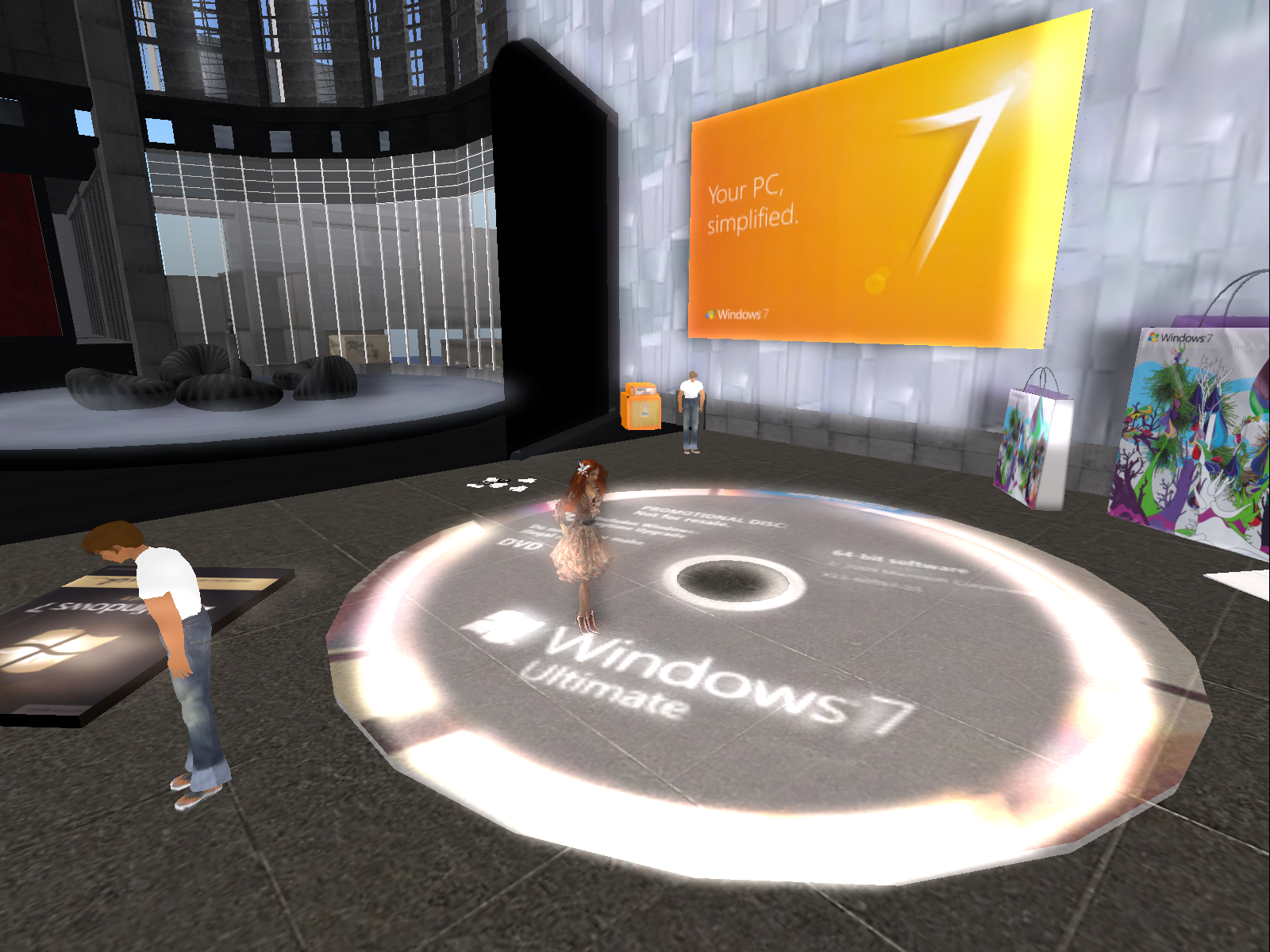Conclusions
All in all, when considering the arguments for Microsoft to enter the social virtual world business, the key issues against it are:
- Second Life’s market, compared to Microsoft’s, is far, far too small
- Linden Lab uses too much Microsoft-unfriendly technologies which are impossible to port
- Brand awareness is good, but usually associated (by the media) with adult content; changing the brand would be pointless, since it’s probably one of LL’s biggest assets; the current brand is confusing with an existing Microsoft brand
- There is little that Microsoft cannot do by using OpenSim instead of Second Life, if they’re serious about the virtual world business: with the advantage that OpenSim is completely free, Microsoft-friendly, and compatible with Microsoft technologies (unlike LL’s core servers) — and, of course, Microsoft is already tinkering with it. And Microsoft already partners with ReactionGrid for establishing a presence for them and their own partners. Why should they buy Linden Lab?
The only argument for buying a share (or even all) of Linden Lab is for its profitability. US$50 million annually might not be much for the software giant, but, in this era of economic downturn, it might not be too bad, either. Leveraging on Microsoft’s huge and successful marketing network, they might potentially reach a wider audience, so far as they understand that Second Life is really a niche market (and I’m sure that after 3 years or so of intense use, Microsoft is well aware of the market limitations). You might have noticed how strong IMVU’s web advertising is — some sites show three or four ads for IMVU on the same page! Now imagine that Microsoft puts the Second Life viewer into Microsoft Update, and starts pushing ads through adCenter as aggressively as IMVU does via Google AdSense! It’s reasonable to admit that they might get 2-3 times the number of residents that way, and push the profitability into US$100 or so million dollars. Again, not much for Microsoft, but possibly better than what some divisions are making — most run at a loss.
Microsoft might also be starting a change in their attitude. I call this the “friendly IBMisation”: when IBM finally understood, by the turn of the century, that they weren’t going to lead the PC market, they completely redefined themselves in a relatively short time. All of a sudden, they embraced open source technology very aggressively. Their trademark grey suits and ties were replaced by cool techie guys in casual wear and ponytails. IBM, all of a sudden, switched from being “corporate dull” to “geeky and trendy”, and, thanks to that, still remains as an industry leader.
With Apple surpassing Microsoft in size — and definitely in coolness! — Microsoft under Ballmer might be looking for ways to become the “cool company” they were around 1985, when they pushed IBM out of the PC business. I have no clue if Ballmer can pull that off, but they might try. One clever change would be to look at buying profitable companies instead of media-hyped ones. IBM, by the turn of the millennium, started focusing on low-cost, high-quality open source architectures to sell to their clients, because they were far cheaper to maintain and further develop internally — by reducing costs, they enhanced profitability. Microsoft might instead adopt a new attitude: buying successful, profitable companies with a proven business model instead of relying on media-hyped one-person companies. If they bought Linden Lab and pushed that message out, it would certainly put in question the whole attitude towards “cool technology” of the past decade…
I’m not sure if Microsoft was one of the bidders or not — and if Linden Lab rejected Microsoft’s offer, we will never know, no matter how hard journalists push and how much information gets “leaked”, through reliable or unreliable sources — but, like Tateru, I think that Linden Lab, or at least their VC partners, have been entertaining bids for a long time now: at least a year, but possibly more. It would be very surprising if they didn’t get a single bid, since at least the VC partners, after a decade, would almost certainly be looking around for buyers of their own share, if not of the whole company, no matter what LL plans — unless, of course, Philip is interested in buying back the shares held by the VC partners (which could be a possibility; I would, if I trusted the company I ran; in fact, I did exactly that, a decade ago). I also agree with Tateru that the “long wait” for selling out a share of LL is because LL (or their VC partners) are waiting for better offers. The more the wait, the better. The economic downturn means that fewer companies will be willing to invest; however, Linden Lab remains profitable and is increasing profits by downsizing and dumping all “exploratory” projects which didn’t have any success. They might be one of the few good examples on survival through a financial crisis, where they have actually grown in size and profits, while everywhere else companies are shrinking. Microsoft, or any other clever company, might start looking at companies like Linden Lab as far better choices than media-hyped techie companies without valid business models, and this might not only change the tide in the technological industry, where all that is geeky and has “lots of registered users” attracts attention, no matter how much money they’re losing. No, we didn’t learn anything about the dot-com bubble 🙁
Still, it’s really a question of time until LL’s VC partners sell their shares. There are three possible alternatives: either they sell them back to Philip; they sell them independently; or they agree with the Board to sell the whole company. When you have run on VC funding, these are the only choices: no VC company, no matter how good the relationship between them and the board, will want to hold on their shares indefinitely. They’re in the business to invest and get a huge return on the investment after a few years. They waited almost a decade. Now it’s time for them to sever their ties with Linden Lab and go away.
[UPDATE: Thanks for the many commenters that pointed out that the SL viewer code is written in C++ and not C#. To be honest, I have just looked at the Mac version, and that was quite a long time ago… I’ve deleted the erroneous reference from this article]






